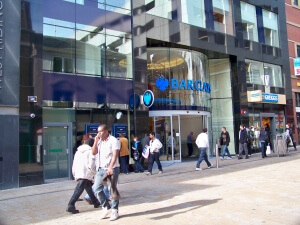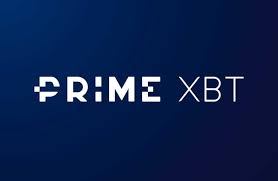Barclays concentrating on last look execution as core business activity as war on retail banking customers continues
London used to be the banking capital of the world. Now it is the electronic trading and interbank dealing capital. With Barclays ditching a further 7000 traditional bank customers and shedding entire continental retail branch operations, a sole focus on interbank FX dealing on its BARX platform – along with last look execution – could dominate

Barclays Bank has been, for a remarkable 326 years, a pinnacle among London’s banking and international financial powerhouses.
326 years is an incomprehensible amount of time, marking out the vast institution with a revenue of £25.4 billion per year as being one of the most established financial entities in the world.
This year, however, Barclays has begun making a tremendous shift of focus, very rapidly indeed, away from traditional banking, and is making a further concentration on its institutional trading and interbank dealing business that is based in Canary Wharf, in London.
FinanceFeeds has conducted research into the direction of the retail arms of the large Tier 1 British banks over the course of 2016, deducing that most of them are becoming increasingly less interested in retail ‘branch banking’ business and are dedicating much more of their resources toward interbank trading.
Today, Barclays’ initiative in this direction expands further as the bank prepares to close the accounts of 7,000 low-return customers, or move them to another bank in what is being hawked under a politically correct description, that being that it is attempting to reshape its offering to keep pace with tighter capital rules.
More likely, Barclays sees traditional banking as an expensive, resource-hungry exercise and is looking to remove as much of it as possible from the high streets of Britain and Europe.
This is a direction that Barclays has been taking for quite some time. FinanceFeeds was made aware this year by several senior executives of established small to medium enterprises in Britain whose business accounts had been run to perfection, simply finding that Barclays has terminated their accounts.
Barclays is the world’s third largest Tier 1 FX dealer by volume, with 8.11% of the world’s order flow going through its books.
Barclays is also one of Europe’s largest retail traditional banking institutions, with a network across the entire continent from its base in London.
…or rather it was one of Europe’s largest traditional banking institutions.
It is clear that economies of scale are vital for large financial institutions, however Barclays is conducting its dominance by focusing on FX and other interbank derivatives asset classes rather than its traditional business, as just two weeks ago the British company completed its complete exit from the European market’s traditional banking sector, culminating in the sale of the final remaining 74 branches in France to private equity firm AnaCap Financial Partners, meaning that it now can concentrate its efforts solely on being at the very forefront of London’s global electronic trading epicenter.
Structural changes to the markets, management upheaval among many big banks, new non-bank entrants and lack of volumes and volatility have seemingly levelled the playing field among the industry’s biggest firms.
The biggest change in the rankings this year is the decline of the combined market share of the top five global banks. Their market share peaked in 2009 at 61.5% and was still above 60% as recently as 2014.
By 2015, the top five banks accounted for just 44.7% of total volume, however Barclays battles it out in the race for supremecy with Citi and Deutsche Bank, both of which also conduct their entire business from London.
So, that is the end of Barclays’ operation of branch banking across European high streets, a direction that concludes the Bank’s offloading of its entire Barclaycard credit card operations in Spain and Portugal to Bancopopular-e, a total divestment of its stake in Barclays Africa, a complete dispensement of its Egyptian operations and the sale of its wealth and investment management business in Singapore and Hong Kong.
Meanwhile, on home territory, Barclays continues to stand out in terms of procedure and its domination of market practice with regard to electronic trading with its BARX single-dealer platform.
Barclays is one of the world’s most prominent proponents of the last look execution procedure, its BARX platform which provides FX liquidity by streaming indicative prices on an in house and third party platform basis.
Barclays’ corporate standpoint on the reasons why it uses last look methodology is that being one of the world’s largest interbank FX dealers, it does not generally seek to reject trade requests. However, electronic spot FX market-making is a highly competitive industry and for the reasons set out above it necessarily exposes the liquidity provider to the risk of trading on incorrect pricing.
Barclays maintains that last look functionality is used to protect against these risks and allows liquidity providers to show considerably tighter electronically streamed prices than they otherwise could – something that the bank considers beneficial to every user of electronic FX trading platforms and is very hard line with regard to this.
The bank is aiming to get at least a 10 per cent return on capital from its markets clients and has recently launched a computer system called Flight Deck to help rank customers based on their returns levels and identify those who are currently not making the grade.
In an interview with Bloomberg this week, Kashif Zafar, co-head of global distribution and co-head of macro products at Barclays said
“We have the returns figures, so we can go and have those tough conversations with clients that don’t meet our hurdle rates. We’re not in the old-school business of doing big revenue with poor returns. That’s a failing strategy.”
In January this year, the Foreign Exchange Professionals Association (FXPA), held a webinar on examining the implications of last look for the FX markets.
Attorneys with Steptoe & Johnson on the ‘last look’ webinar, advised market makers to be more transparent about how their last look systems operate.
“Regulators take a very dim view of institutional practices that emphasize a lack of transparency and that encourage employees to give either misdirection or less than complete information to counterparties when direct questions are asked,” said Mike Miller, litigation partner at Steptoe & Johnson, who spoke during the webinar.
In one high-profile case, a global bank used its spot FX trading platform to reject unprofitable trades. When customers asked why the trades were rejected, the bank reportedly gave “vague or misleading answers,” said Steptoe partner Jason Weinstein who analyzed the case during the webinar.
After a regulatory settlement, the bank posted detailed disclosures on its web site and also paid a steep fine, setting a precedent that could impact other banks, brokers and market-making firms.
FinanceFeeds has spoken at length with a number of senior executives within the institutional and prime brokerage sector recently, many of which have openly stated that many institutional participants do not like firms that offer ‘no last look’ execution, despite the regulatory and government derision aimed at the practice, yet Barclays continues to focus on this via its BARX platform which is now becoming a mainstay of the bank’s business.
Brett Tejpaul, another co-head of global distribution for credit and equities at Barclays also stated “The onset of capital rules changed the business – more now isn’t necessarily better and we need to be a lot more selective. In the past we all had a rather one dimensional view through the revenue metric.”
The decision has hardly been made overnight. The banking giant has been working towards a more focussed offering which prioritises returns over revenues for around the last two and a half years, and the lender has already dropped 17,000 clients – some of which Mr Tejpaul described as “essentially inactive” despite the bank shelling out to maintain the relationships – from its books.
After offloading these plus a further 7,000 clients, the firm will be left with approximately 8,000 customers on its markets side.
Barclays with its 8.1% global market share of the global FX market, is the second largest dealer in the world.
If you are the head of PB relationships at a large brokerage, you are likely to be butting heads with the risk management teams to get orders processed.
Derivative asset exposures at Barclays in 2015 were £295 billion, which was lower than reported if netting was permitted for assets and liabilities with the same counterparty, or for which Barclays holds cash collateral.
Similarly, derivative liabilities for 2015 stood at £295 billion. In addition, non-cash collateral of £7 billion was held in respect of derivative assets. Barclays also received collateral from clients in support of over the counter derivative transactions.
In September this year, the Massachusetts Institute of Technology issued a report, authored by Alex Lipton, David Shrier and Alex Pentland, called “Digital Banking Manifesto: The End of Banks?” citing the lack of innovation in the banking sector and how it compares to other industries.
The academics rightly say that banking has hit a brick wall in innovation, concurring with FinanceFeeds’ conclusion when investigating the methodology of mainstream banks in their retail and corporate operations outside of the provision of FX liquidity – ironically some of them being the very same companies that power the global financial markets.
Indeed, there is clearly far more profit in operating one central office in which the global markets are traded to the tune of trillions per day in notional volume, by comparison to having the real estate, human resources, logistics and overheads of running retail branches that deal with small-money current account holders and borrowers, but this dichotomy is far too great to be sensibly sustainable.
One specific finding by MIT is that the academics consider by way of diagnosis of the situation, suggesting that the lack of innovation is a result of “weak competition” between banks, which subsequently leads to other problems, such as less-than-satisfactory customer service and so on, yet these institutions continue operating despite these flaws, as customers do not seem to have any viable alternatives.
This rings absolutely equal to our findings, which are very relevent to the FX industry.
A notable ‘dinosaur effect’ is that it is becoming increasingly difficult for new FX brokerages, and FX service providers wishing to diversify into the brokerage sector to be able to establish bank accounts with mainstream financial institutions.
Whilst this is not necessarily a new dynamic, a recent investigation by FinanceFeeds has uncovered that banks in regions that are very populous with FX industry participants are becoming very strict with regard to the risk management aspect of allowing any entity associated with the FX industry to open bank accounts.
This ranges from brokerages, to signal providers, technology vendors and developers of ancillary services, once the words ‘retail FX’ come about, the banks retract.
So in summary, banks such as Barclays are doing away with traditional banking which requires branches, staff, massive real estate expenses, and low returns from retail customers in favor of total domination of the interbank electronic trading sector, and the ability to run last look desks, and in turn choose how trades are processed, yet control the OTC market by restricting credit to primes unless an enormous capital base can be demonstrated.









